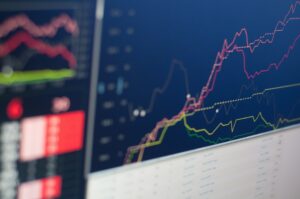Mastering Technical Analysis: A Guide to Predicting Forex Movement
Forex trading is a highly competitive and dynamic market, where traders strive to make profitable decisions in a fast-paced environment. To succeed in this challenging arena, it is crucial to have a strong understanding of technical analysis. By mastering the art of technical analysis, traders can gain insights into market trends, identify potential trading opportunities, and make informed decisions about buying or selling currencies.
Technical analysis is a method of evaluating market data, such as price charts, patterns, and indicators, to predict future price movements. It is based on the belief that historical price data can provide valuable information about the future direction of the market. To effectively use technical analysis in forex trading, traders need to familiarize themselves with several key concepts and tools.
Candlestick Patterns:
One of the most widely used tools in technical analysis is candlestick patterns. Candlestick charts provide a visual representation of price movements over a specific period. Each candlestick consists of a body and two wicks, representing the opening, closing, high, and low prices for a given time frame.
Candlestick patterns, such as doji, hammer, engulfing, and shooting star, can indicate potential reversals or continuation of trends. For example, a doji pattern, where the opening and closing prices are virtually the same, can indicate indecision in the market. Traders often look for confirmation signals to validate the significance of a particular candlestick pattern.
Support and Resistance Levels:
Support and resistance levels are crucial concepts in technical analysis. Support refers to a price level at which buying pressure exceeds selling pressure, preventing the price from falling further. Resistance, on the other hand, is a price level at which selling pressure exceeds buying pressure, preventing the price from rising.
Identifying support and resistance levels can help traders determine potential entry and exit points. When the price approaches a support level, traders may look for buying opportunities, expecting the price to bounce back. Conversely, when the price approaches a resistance level, traders may consider selling, anticipating a potential price reversal.
Moving Averages:
Moving averages are widely used technical indicators that smooth out price fluctuations and help identify trends. They are calculated by averaging the closing prices over a specific period. Moving averages can be simple (SMA) or exponential (EMA), with the latter giving more weight to recent price data.
Traders often use moving averages to identify trend reversals or confirm existing trends. For example, if the price is consistently trading above a rising moving average, it may indicate an uptrend. Conversely, if the price consistently trades below a declining moving average, it may indicate a downtrend.
Technical Indicators:
There are numerous technical indicators available to traders, each serving a specific purpose. Some popular indicators include the Relative Strength Index (RSI), Moving Average Convergence Divergence (MACD), and Bollinger Bands. These indicators provide additional insights into market conditions, such as overbought or oversold levels, trend strength, and volatility.
However, it is essential to use technical indicators wisely and avoid overcomplicating the analysis. Too many indicators can lead to conflicting signals and confusion. Traders should focus on a few key indicators that align with their trading strategy and provide consistent results.
Risk Management:
While technical analysis can be a powerful tool for predicting forex movement, it is crucial to incorporate effective risk management strategies. Forex trading involves inherent risks, and even the most accurate predictions can result in losses. Traders should always set stop-loss orders to limit potential losses and adhere to proper risk-to-reward ratios.
Additionally, traders should not solely rely on technical analysis but consider fundamental factors as well. Economic indicators, geopolitical events, and central bank policies can greatly impact currency prices. Combining technical analysis with fundamental analysis can provide a more comprehensive understanding of the forex market.
In conclusion, mastering technical analysis is essential for predicting forex movement and making informed trading decisions. By understanding candlestick patterns, support and resistance levels, moving averages, and technical indicators, traders can gain insights into market trends and identify potential trading opportunities. However, it is essential to incorporate effective risk management strategies and consider fundamental factors to navigate the dynamic and competitive forex market successfully.





